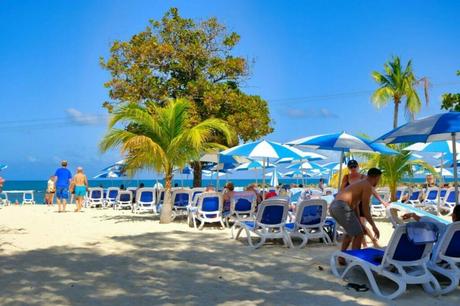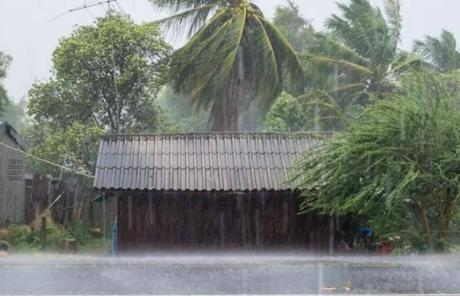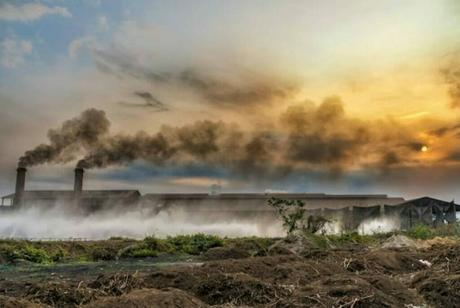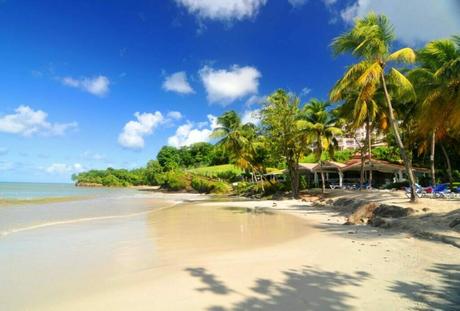Visitors can enjoy warm, all-year-round temperatures in the range of 24°C and 30°C (75°F to 87°F) because to Grenada’s tropical climate. A naturalist’s paradise, the island’s lush environs have given it the nickname “Spice Isle” due to the abundance of fragrant spices there.
While rain showers may surprise travelers, they add to the island’s beauty and support its rich vegetation and wildlife. Due to its southern location within the hurricane belt, Grenada is less likely to be hit by storms during the hurricane season, which runs from June to November. But it’s crucial to be knowledgeable and organized.
Temperature (°C)24 – 3125 – 3026
Precipitation (mm)50 – 100150 – 250200
Humidity (%)70 – 8075 – 8575
Sunshine Hours per day8 – 95 – 77
Sea Temperature (°C)26 – 2827 – 2927
Wind Speed (km/h)10 – 1515 – 2015
Major Weather EventsOccasional Saharan DustTropical Storms and Hurricanes
Climate change poses challenges, affecting coral reefs, water resources, and storm threats. Sustainable choices are encouraged to preserve Grenada’s natural wonders.
Tropical Climate

Do you recall how it feels to come off a plane and be greeted by warm air? Grenada’s tropical atmosphere is exactly like receiving a hug from Mother Nature herself. The island experiences consistent temperatures year-round, averaging between 24°C (75°F) and 30°C (87°F). Grenada therefore has you covered if you’re looking for some sun or merely enjoy a pleasant temperature.
While the heat can feel pleasant, remember that “tropical” also means “humid.” In particular during the midday heat, keep hydrated and take pauses in the shade. Consider it a perfect excuse to enjoy a midday siesta, or better yet, sample some of the island’s legendary rum punch!
What makes the Grenada climate truly special, though, is the way it shapes the island’s landscape. The warmth and humidity foster a lush, green paradise, blooming with life all year round. Grenada is proudly nicknamed the “Spice Isle,” a tribute to its fertile lands that produce a bounty of aromatic spices like nutmeg and cinnamon.
And while we’re talking about the island’s flora, let’s not forget the beaches. Picture long stretches of sandy shores, where coconut palms sway with the breeze, providing that much-needed respite from the sun. It’s the tropical dream come true, courtesy of Grenada’s climate.
Lastly, there’s the night – when the heat of the day gives way to a gentle, warm embrace. Stargazing under this Caribbean sky, serenaded by the whispers of the sea, is an experience you won’t soon forget. After all, the tropical climate is a full day affair, and Grenada knows how to make every moment count.
Rainfall Patterns

Ever wondered how Grenada maintains its lush, green cloak throughout the year? Well, you can thank the island’s rainfall patterns for that. Grenada gets a good quantity of rain, with June to December being the wettest month. Let’s clarify the situation first, though, before you start to regret your vacation arrangements.
First off, even during the “wet” season, showers frequently pass quickly and are replaced by sunshine. As they say, “Rainbows would not exist without the rain.” And trust me, witnessing a rainbow arching over Grenada’s emerald landscape is worth a few minutes of drizzle.
On the other hand, if you happen to experience an unexpected rain during the ‘dry’ season, which normally lasts from January to May, don’t be astonished. Grenada’s climate is another example of how nature keeps things interesting. But worry not, these showers are just a quick sprinkle, barely enough to disrupt your beach day or spice tour.
Also worth mentioning is that different parts of the island see different amounts of rainfall. More rain falls in the interior than along the coast, especially in hilly places. Therefore, remember to bring a raincoat if you intend to go hiking in the Grand Etang National Park.
Rainfall in Grenada isn’t just about keeping tourists on their toes, though. It’s a key part of the island’s water cycle, replenishing rivers and underground reserves, and supporting the lush vegetation and diverse wildlife. So next time it rains during your visit, remember – it’s all part of the magic of the Spice Isle.
Hurricane Season

Let’s move on to a topic that is a little less sentimental: hurricane season. This essential aspect of Grenada’s climate is one that every visitor to the island should be aware of. The Atlantic hurricane season typically lasts from June to November, with September being its peak month.
The good news is that Grenada is situated at the storm belt’s furthest southern extremity. This suggests that the island is less likely to be affected by hurricanes than other Caribbean areas. The latest significant hurricane to make landfall in Grenada was Hurricane Ivan in 2004. Locals continue to discuss it today.
Nevertheless, it’s wise to keep researching and being ready. During hurricane season, be sure to pay attention to weather forecasts and follow any advice or directives given by local authorities.
And remember, every cloud has a silver lining – the hurricane season coincides with the off-peak tourism period, so you’re likely to enjoy fewer crowds and lower prices.
On the flip side, this season brings an intense display of nature’s might. Seas get a bit rougher, winds pick up, and the atmosphere becomes electric. It’s a reminder of how powerful Mother Nature can be, and how humbling it is to be a small part of this grand scheme.
Climate Change Impact

Finally, we can’t discuss Grenada’s climate without addressing the elephant in the room – climate change. Grenada confronts distinct problems as a result of global warming, just like many other island nations. A few of the effects the island is dealing with include rising sea levels, rising temperatures, and altering rainfall patterns.
The coral reefs surrounding the island can clearly see the impact. These underwater ecosystems, essential for marine life and Grenada’s fishing industry, are suffering from coral bleaching due to warmer ocean temperatures. The government and various NGOs are working tirelessly to protect and revive these precious habitats.
Climate change also threatens the island’s water resources. With longer dry periods and more intense rain events, managing water supply and quality becomes a growing concern. But Grenada isn’t just standing by. They are aggressively investing in environmentally friendly water management techniques, such as recycling wastewater and collecting rainwater.
The possibility of greater and more frequent storms as a result of climate change is another area of worry. While Grenada is generally out of the main hurricane belt, the threat of severe weather events looms large. This has prompted an increased focus on disaster preparedness and infrastructure resilience across the island.
We are all responsible for lessening the effects of climate change to some level. Be careful of your impact and choose sustainably as you enjoy Grenada’s stunning beaches, lush surroundings, and vibrant culture. After all, preserving the magic of the Spice Isle is a responsibility we all share.
FAQ

What type of climate is in Grenada?
Grenada experiences a tropical climate with year-round highs between 24°C and 30°C (75°F and 87°F). As a result of the island’s consistently lovely weather, both tourists and inhabitants feel at home.
Is Grenada hot or cold?
Grenada has a hot climate due to its location in the tropical region. The average temperatures ranging between 24°C to 30°C (75°F to 87°F) contribute to the island’s reputation as a warm and welcoming destination for travelers seeking a tropical escape.
Does snow fall in Grenada?
Grenada does not experience snowfall. The balmy climate of Grenada, a tropical island in the Caribbean, prevents snow from falling there all year round. Instead, guests may take in the island’s pristine beaches and luscious green scenery while basking in the soft sunlight.

